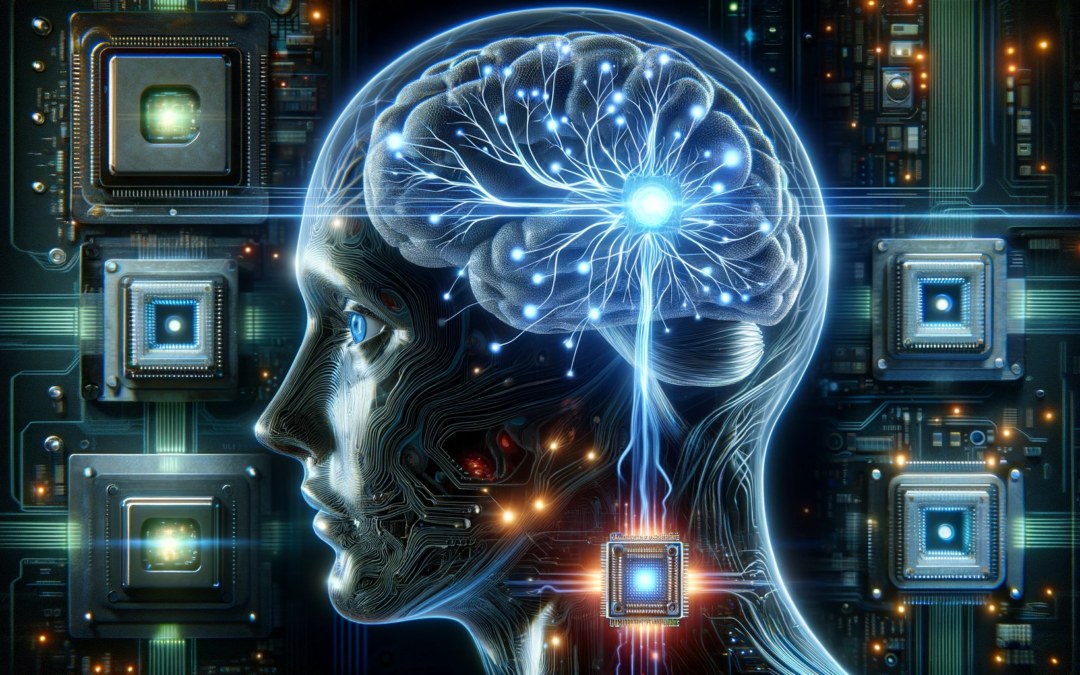In the twilight of our current era, as we stand on the precipice of a future both unknowable and unfathomable, the neural prototype synchron (NPS) emerges not just as a breakthrough in artificial intelligence but as a harbinger of a new epoch in human evolution. This technology, nascent yet burgeoning with potential, represents a paradigm shift in how we interact with machines, blurring the lines between human consciousness and artificial intelligence.
At its core, the NPS is an advanced neural interface system that establishes a direct, symbiotic connection between the human brain and AI. This interface goes beyond traditional brain-computer interfaces (BCIs) by creating a two-way link, where both AI and human intelligence can interact, learn from, and augment each other in real-time. Imagine a scenario where your thoughts can directly influence and control an AI system, while simultaneously, the AI enhances your cognitive capabilities by providing instant access to a vast repository of knowledge and computational power.
The technical architecture of NPS is a marvel of modern science, integrating advancements in neuroimaging, machine learning, and quantum computing. At its heart lies a sophisticated AI algorithm capable of interpreting and translating neural signals into actionable commands and vice versa. This algorithm is powered by quantum processors, providing the speed and capacity needed to handle the vast amount of data involved in real-time neural communication.
As with any groundbreaking technology, the NPS brings with it a host of ethical considerations. The prospect of such intimate machine-human integration raises questions about privacy, autonomy, and identity. What does it mean to be human when our thoughts and decisions can be influenced or augmented by an artificial entity? How do we ensure the security and integrity of our most private thoughts when they are interfaced with a machine? These are questions that must be addressed as we navigate this uncharted territory.
The applications of NPS are as diverse as they are profound. In medicine, it could revolutionize the treatment of neurological disorders, providing unprecedented insight into the workings of the human brain. In education, it could offer personalized learning experiences, adapting in real-time to a student’s cognitive state. In industry, it could enable more intuitive and efficient human-machine collaboration, breaking new ground in areas like robotics and automation.
Envision a world where NPS has matured and become seamlessly integrated into daily life. Professionals could enhance their skills and knowledge instantaneously, artists could explore new realms of creativity by directly interfacing with AI-driven design tools, and the barriers between different languages and cultures could be diminished through real-time, neural-based translation systems.
The road to fully realizing the potential of NPS is fraught with technical and ethical challenges. Achieving a seamless and safe neural interface requires advances in neuroimaging and AI algorithms that are sensitive to the nuances of human thought patterns. Ethically, a global consensus on the governance and use of such technology is imperative to prevent misuse and to ensure that the benefits of NPS are accessible to all.
The neural prototype synchron is not just a technological innovation; it is a stepping stone towards a future where the boundaries between human and machine intelligence become indistinct. As we venture into this brave new world, it is incumbent upon us to approach with a blend of awe, caution, and a deep sense of responsibility. The NPS is a testament to human ingenuity and a reminder of the endless possibilities that lie at the intersection of mind and machine.










